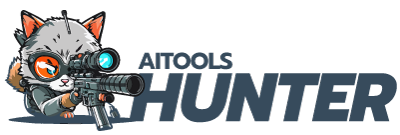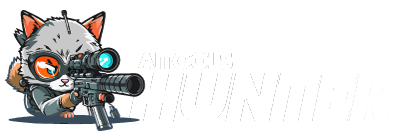Roboflow
Roboflow streamlines computer vision model development with easy data management, augmentation, training, deployment, and performance monitoring.
Computer vision, a subfield of artificial intelligence, has experienced rapid growth and adoption in recent years. As a result, developers, data scientists, and machine learning engineers are increasingly seeking tools to help streamline the process of building, deploying, and managing computer vision models. Roboflow is a platform designed to address these needs by providing a comprehensive set of tools for the entire machine learning pipeline. This article will explore Roboflow’s features and demonstrate how it simplifies computer vision model development for professionals with varying levels of expertise.
Data Management with Roboflow: Streamlining Dataset Handling for Computer Vision Applications
One of the key challenges in computer vision model development is managing and organizing image datasets. Roboflow addresses this issue by offering an intuitive platform for users to preprocess, annotate, and version their image data. By simplifying dataset handling, Roboflow enables developers to spend more time on model development and less on data management tasks.
The platform’s user-friendly interface allows for easy organization and preprocessing of image datasets. Users can upload images, create labels, and define bounding boxes or polygons for object detection and segmentation tasks. Additionally, Roboflow’s versioning system helps users maintain control over their datasets, making it easy to track changes and revert to previous versions when necessary.
Data Augmentation Techniques: Boosting Model Performance and Generalization
Data augmentation is a critical aspect of computer vision model development, as it helps improve model performance and generalization by increasing the size and diversity of image datasets. Roboflow offers a variety of data augmentation methods within its platform, enabling users to apply these techniques with ease.
Some of the data augmentation techniques available in Roboflow include horizontal and vertical flipping, rotation, scaling, brightness and contrast adjustments, and more. By using these techniques, users can generate additional training data and improve their model’s ability to recognize and classify objects in various conditions and environments.
Model Training and Integration: Seamless Integration with Popular Machine Learning Frameworks
Roboflow is compatible with popular machine learning frameworks, such as TensorFlow and PyTorch, allowing users to train their computer vision models using their preferred tools and libraries. This seamless integration with existing machine learning workflows makes Roboflow an attractive choice for developers and data scientists alike.
Once a dataset has been prepared and augmented, users can export it to their desired machine learning framework for model training. Roboflow’s integration with these frameworks ensures that users can take advantage of the latest advancements in computer vision technology, such as transfer learning and state-of-the-art architectures.
Simplified Model Deployment: Accelerating Implementation of Computer Vision Applications
After training a computer vision model, deploying it to various platforms can be a complex and time-consuming task. Roboflow simplifies this process by enabling users to deploy their trained models on web, mobile, and edge devices with ease. This streamlined deployment process allows developers to accelerate the implementation of computer vision applications and reach their target audience faster.
With Roboflow’s deployment tools, users can export their trained models in various formats, such as TensorFlow Lite, Core ML, and ONNX. These formats are compatible with a wide range of platforms, making it easy to deploy computer vision models on Android, iOS, or edge devices, as well as in web applications.
Performance Monitoring and Optimization: Ensuring Optimal Model Performance and Reliability
Once a computer vision model is deployed, it’s essential to monitor its performance and address any issues that may arise during its lifecycle. Roboflow provides tools for performance monitoring, enabling users to identify and address potential problems in their models.
By tracking key performance metrics, such as accuracy, precision, and recall, users can gain insights into their model’s performance and make necessary adjustments to improve its reliability. Additionally, Roboflow offers tools for optimizing computer vision models, helping users achieve better performance and reliability in their applications.
Continuous Model Improvement: Leveraging Roboflow’s Tools for Iterative Development
In the ever-evolving field of computer vision, it’s crucial to continuously improve and update models to stay competitive. Roboflow facilitates this iterative development process by providing tools and features that enable users to refine their models over time. By incorporating user feedback and new data, developers can enhance their computer vision models and ensure they remain effective in real-world scenarios.
Roboflow’s platform makes it easy to incorporate new data into existing datasets, allowing users to retrain their models with updated information. This continuous improvement process helps developers stay ahead of the curve and ensures that their computer vision models remain relevant and effective.
Collaboration and Teamwork: Streamlining Computer Vision Development Across Teams
Roboflow is designed to support collaboration among developers, data scientists, and machine learning engineers, making it an ideal platform for teams working on computer vision projects. By offering a centralized platform for managing datasets, model training, and deployment, Roboflow enables teams to work together efficiently and effectively.
With its built-in versioning system and robust access controls, Roboflow ensures that team members can collaborate on datasets and models without risking data loss or compromising security. Additionally, the platform’s intuitive user interface makes it easy for team members with varying levels of expertise to contribute to the development of computer vision models.
Conclusion
Roboflow is a comprehensive platform designed to simplify and streamline the development, deployment, and management of computer vision models. With its user-friendly interface, powerful data management tools, and compatibility with popular machine learning frameworks, Roboflow is an invaluable resource for developers, data scientists, and machine learning engineers working in the field of computer vision.
By offering a wide range of features, including data augmentation techniques, simplified model deployment, performance monitoring, and optimization tools, Roboflow enables users to build, deploy, and maintain high-performing computer vision models with ease. As the demand for computer vision applications continues to grow, platforms like Roboflow are essential for helping professionals stay competitive and deliver cutting-edge solutions in this rapidly advancing field.








